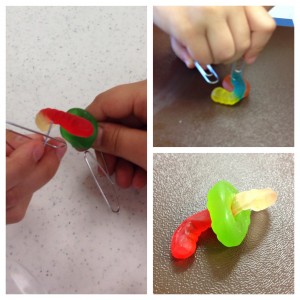As we approach the holiday season, presents are not the only thing that will be “wrapped up” this month. In each grade level, we are finishing the first semester science and engineering units. Throughout the month of December and early January the students will explore coding using the Hour of Code and participate in a few technology lessons during STEM class. In the new year, the grade levels will move into their second unit of study for STEM that will take them through the remainder of the year.
- Sixth Grade: These engineers are almost finished building and improving their acoustical instruments. My goal is to have the students record a short video explaining their instrument’s design and demonstrating the instrument. Unfortunately, we will not have time to play a song together as a class for a school/grade level competition. In January, the sixth grade classes will be moving into the study of chemistry, focusing on mixtures and solutions.
- Fifth Grade: Using controlled experiments, these scientists are investigating and exploring speed, momentum, and collisions using steel balls, ramps, and foam runways. This cycle the students will create their own experiment to identify new scientific knowledge, building on what we have already discovered through our previous explorations. Fifth grade’s next unit will focus on engineering – the students will be designing windmills.
- Fourth Grade: This cycle the students are wrapping up their exploration of series and parallel circuits. Each group must decide which circuit is best for a string of lights, Christmas lights to be exact! Working in collaborative groups, the students are building the circuits, testing the simulation of a burned-out bulb, and writing a recommendation letter to the board of the company. We will continue with energy in January; the students will be engineering a solar oven!
- Third Grade: Our third grade scientists recently planned their own experiment to determine what happens when solids and liquids are mixed together. This cycle the students will test their ideas, using their own procedure and chart to record observations. After the holiday break, third grade will focus on ecological behaviors and systems.
- Second Grade: These geologists had a blast learning about Earth’s materials. We finished up the unit with the students sorting a rock mixture into the following groups: large pebbles, small pebbles, large gravel, small gravel, and sand. Once we have finished our technology lessons, these second graders will begin exploring balance and motion.
- First Grade: The students recently investigated toothpaste, in order to decide if toothpaste was a solid or a liquid. These scientists have learned about the properties of solids and liquids throughout many investigations. After the holiday break, the first grade classes will begin studying insects and plants.
- Kindergarten: Our youngest scientists recently switched gears from the study of trees to the study of weather. This cycle the students are making their own wind sock, to observe wind direction. In January, we will begin learning about living things. There will be a few aquariums and terrariums in our classroom for the students to explore!
- MDS: Our little beans sprouted! It was exciting to see the beginning of a plant’s life cycle. In STEM class, we began our discovery of weather a few weeks ago. Using water, shaving cream and food coloring, the students were able to see clouds rain! Before the holiday break, the students will be exploring temperature and the four seasons.
IMPORTANT:
My maternity leave will begin on Monday, December 14th. This is a very exciting time for my family! I will miss the students at Blue Ball Elementary, but know that my time at home will be precious and memorable. My plan is to return on March 7th, 2016. Enjoy your holiday – Merry Christmas and see you in the new year!
Thanks!
~Mrs. McCabe


